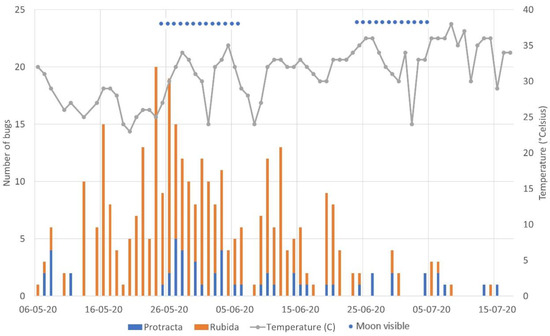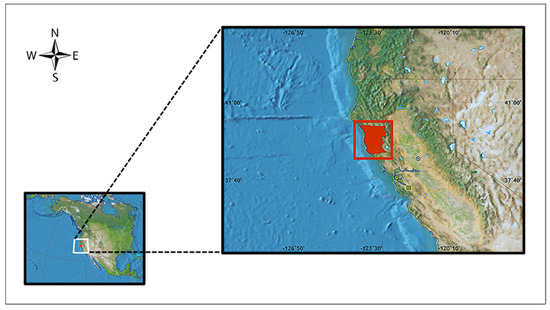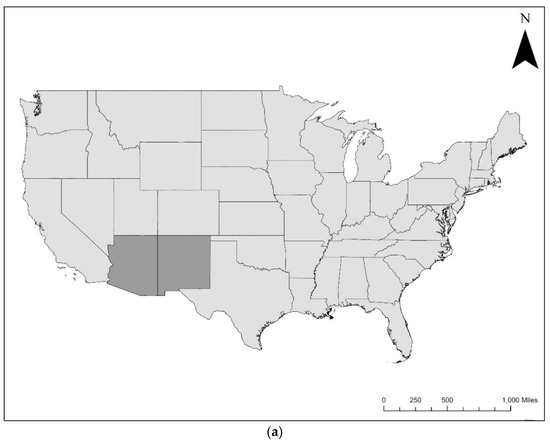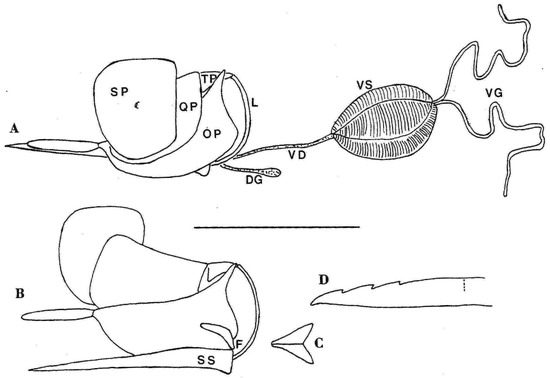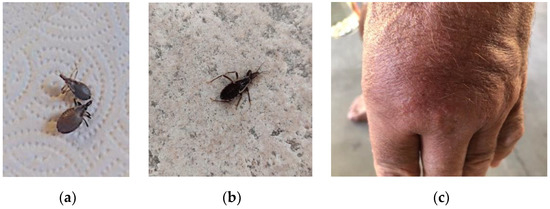Humans and Arthropod Bites and Stings: Venom and Envenomation
Share This Topical Collection
Editors
 Prof. Stephen A. Klotz
Prof. Stephen A. Klotz
 Prof. Stephen A. Klotz
Prof. Stephen A. Klotz
E-Mail
Website
Collection Editor
Department of Medicine, University of Arizona, Tucson, AZ, USA
Interests: kissing bugs; Chagas disease; envenomation of humans; candidiasis; serum amyloid P component
 Dr. Justin O. Schmidt
Dr. Justin O. Schmidt
 Dr. Justin O. Schmidt
Dr. Justin O. Schmidt
E-Mail
Website
Collection Editor
Department of Entomology, University of Arizona, Tucson, AZ, USA
Interests: toxins; stinging insects; kissing bugs; venoms; Africanized honeybees
Topical Collection Information
Dear Colleagues,
This Topical Collection is intended to overlap several separate disciplines including medicine, entomology, toxinology, and toxicology. The two Collection Editors have worked together for 20 years on medical–entomological problems usually involving humans and arthropods or other envenomating animals. We have found this to be a productive and useful approach to our separate research fields. As the biomass of humans proliferates throughout our planet and invades arthropods’ natural habitat, these interactions will become more intense and some may prove lethal to humans. We have found this phenomenon to be one explanation for the thousands of envenomations we have studied in Arizona, e.g., Africanized or “Killer Bees” attacks, rattlesnake bites, severe cutaneous reactions to kissing bug bites, and scorpion (Centruroides sculpturatus) stings.
We invite contributors to submit original reviews of pertinent subject matter as well as papers on basic research. The main topics will be the intersection/interaction of humans and arthropods, stinging and biting, venoms used by the arthropods, and those individuals being envenomated. In that regard, we are also interested in behavioral studies of arthropods that shed light on the interaction of arthropods with humans.
Prof. Stephen A. Klotz
Dr. Justin O. Schmidt
Collection Editors
Manuscript Submission Information
Manuscripts should be submitted online at www.mdpi.com by registering and logging in to this website. Once you are registered, click here to go to the submission form. Manuscripts can be submitted until the deadline. All submissions that pass pre-check are peer-reviewed. Accepted papers will be published continuously in the journal (as soon as accepted) and will be listed together on the collection website. Research articles, review articles as well as short communications are invited. For planned papers, a title and short abstract (about 100 words) can be sent to the Editorial Office for announcement on this website.
Submitted manuscripts should not have been published previously, nor be under consideration for publication elsewhere (except conference proceedings papers). All manuscripts are thoroughly refereed through a single-blind peer-review process. A guide for authors and other relevant information for submission of manuscripts is available on the Instructions for Authors page. Insects is an international peer-reviewed open access monthly journal published by MDPI.
Please visit the Instructions for Authors page before submitting a manuscript.
The Article Processing Charge (APC) for publication in this open access journal is 2600 CHF (Swiss Francs).
Submitted papers should be well formatted and use good English. Authors may use MDPI's
English editing service prior to publication or during author revisions.
Keywords
- arthropods
- stinging
- biting
- venoms
- saliva
- allergies
- toxins
- toxicology
Published Papers (6 papers)
Open AccessCommunication
Seasonal Flight Pattern of the Kissing Bugs Triatoma rubida and T. protracta (Hemiptera: Reduviidae: Triatominae) in Southern Arizona, United States
by
Justin O. Schmidt, Mary L. Miller and Stephen A. Klotz
Cited by 7 | Viewed by 2402
Abstract
The two most common kissing bugs,
Triatoma rubida and
T. protracta, in the Sonoran Desert around Tucson, Arizona are hematophagous vectors of Chagas disease and can induce potentially life-threatening allergic reactions. They were surveyed during their summer dispersal flight period to determine
[...] Read more.
The two most common kissing bugs,
Triatoma rubida and
T. protracta, in the Sonoran Desert around Tucson, Arizona are hematophagous vectors of Chagas disease and can induce potentially life-threatening allergic reactions. They were surveyed during their summer dispersal flight period to determine which environmental factors are correlated with flight activity. The two most important factors governing flights of
T.rubida were temperatures in the range of 26–35 °C and wind speeds below 14 km/h (9 miles/h). Flights were reduced below or above those temperatures, or when wind speeds exceeding 14km/h. Relative humidity and presence or absence of moonshine appeared unimportant. During their dispersal flight periods of May through July and, especially, between the peak of the flight season, 20 June to 5 July, biologists seeking to collect bugs and homeowners wishing to exclude these biting bugs from entering their homes should be most attentive during evenings of average temperature and low wind speed.
Full article
►▼
Show Figures
Open AccessArticle
Anaphylactic Reactions Due to Triatoma protracta (Hemiptera, Reduviidae, Triatominae) and Invasion into a Home in Northern California, USA
by
Norman L. Beatty, Zoe S. White, Chanakya R. Bhosale, Kristen Wilson, Anthony P. Cannella, Tanise Stenn, Nathan Burkett-Cadena and Samantha M. Wisely
Cited by 6 | Viewed by 3026
Abstract
Background:
Triatoma protracta is a triatomine found naturally throughout many regions of California and has been shown to invade human dwellings and bite residents. A man living in Mendocino County, California, reported developing anaphylactic reactions due to the bite of an “unusual bug”,
[...] Read more.
Background:
Triatoma protracta is a triatomine found naturally throughout many regions of California and has been shown to invade human dwellings and bite residents. A man living in Mendocino County, California, reported developing anaphylactic reactions due to the bite of an “unusual bug”, which he had found in his home for several years. Methods: We conducted environmental, entomological, and clinical investigations to examine the risk for kissing bug invasion, presence of
Trypanosoma cruzi, and concerns for Chagas disease at this human dwelling with triatomine invasion. Results: Home assessment revealed several risk factors for triatomine invasion, which includes pack rat infestation, above-ground wooden plank floor without a concrete foundation, canine living in the home, and lack of residual insecticide use. Triatomines were all identified as
Triatoma protracta. Midgut molecular analysis of the collected triatomines revealed the detection of
T. cruzi discrete typing unit I among one of the kissing bugs. Blood meal PCR-based analysis showed these triatomines had bitten humans, canine and unidentified snake species. The patient was tested for chronic Chagas disease utilizing rapid diagnostic testing and laboratory serological testing, and all were negative. Conclusions:
Triatoma protracta is known to invade human dwellings in the western portions of the United States. This is the first report of
T. cruzi-infected triatomines invading homes in Mendocino County, California.
Triatoma protracta is a known vector responsible for autochthonous Chagas disease within the United States, and their bites can also trigger serious systemic allergic reactions, such as anaphylaxis.
Full article
►▼
Show Figures
Open AccessArticle
A Southwestern United States Pilot Investigation of Triatomine–Mite Prevalence
by
Kyndall C. Dye-Braumuller, Hanna Waltz, Mary K. Lynn, Stephen A. Klotz, Justin O. Schmidt, Alvaro Romero, Marvin Stanley Rodriguez Aquino, Jose Ricardo Palacios Valladares, Pamela Michelle Cornejo Rivas and Melissa S. Nolan
Cited by 3 | Viewed by 2883
Abstract
Background: Chagas disease is a leading cause of cardiac failure in Latin America. Due to poor safety profiles and efficacy of currently available therapeutics, prevention is a priority for the millions living at risk for acquiring this clinically important vector-borne disease. Triatomine vectors
[...] Read more.
Background: Chagas disease is a leading cause of cardiac failure in Latin America. Due to poor safety profiles and efficacy of currently available therapeutics, prevention is a priority for the millions living at risk for acquiring this clinically important vector-borne disease. Triatomine vectors of the Chagas disease parasite,
Trypanosoma cruzi, are found in the southwestern United States, but risk for autochthonous transmission is thought to be low. The role of ectoparasitic mites is under-explored regarding the ecology of triatomines and Chagas disease transmission. Methods: Triatomine collections were performed using three common entomologic techniques in 2020–2021 from four different locations in southern Arizona and New Mexico. Triatomines were analyzed visually under a 112.5× microscope for the presence of externally attached mites. Following mite removal, triatomines were tested for
T. cruzi infection by PCR. Results: Approximately 13% of the collected triatomines had mites securely attached to their head, thorax, abdomen, and legs. More than one mite attached was a common finding among ectoparasitized triatomines. Mite presence, however, did not statistically influence triatomine
T. cruzi status. Conclusions: Our findings add to a growing body of literature demonstrating the sustainability of mite-infested triatomine populations throughout the Western Hemisphere. Future investigations are warranted to better understand the biologic impact of triatomine mites and their potential to serve as a potential biological control tool.
Full article
►▼
Show Figures
Open AccessArticle
Comparative Morphology of the Stinger in Social Wasps (Hymenoptera: Vespidae)
by
Mario Bissessarsingh and Christopher K. Starr
Cited by 3 | Viewed by 4514
Abstract
The physical features of the stinger are compared in 51 species of vespid wasps: 4 eumenines and zethines, 2 stenogastrines, 16 independent-founding polistines, 13 swarm-founding New World polistines, and 16 vespines. The overall structure of the stinger is remarkably uniform within the family.
[...] Read more.
The physical features of the stinger are compared in 51 species of vespid wasps: 4 eumenines and zethines, 2 stenogastrines, 16 independent-founding polistines, 13 swarm-founding New World polistines, and 16 vespines. The overall structure of the stinger is remarkably uniform within the family. Although the wasps show a broad range in body size and social habits, the central part of the venom-delivery apparatus—the sting shaft—varies only to a modest extent in length relative to overall body size. What variation there is shows no apparent correlation with social habits. This is consistent with the hypothesis that stinger size is constrained by the demands of a flight-worthy body. The sting lancets bear distinct, acute barbs in all examined species except in members of the Stenogastrinae. Barbs vary considerably among species in number, their summed lengths, and the relative degree of serration (summed length relative to lancet width). Where they are numerous and strong, it increases the likelihood of the stinger remaining fatally embedded in the skin of a vertebrate adversary (sting autotomy). Although an index that combines the number and strength of barbs is a more natural measure of overall serration, the number of barbs alone is almost as good a predictor of the likelihood of sting autotomy. Across the family as a whole, the tendency to sting autotomy is concentrated in the swarm-founding New World polistines.
Full article
►▼
Show Figures
Open AccessCommunication
Kissing Bug Intrusions into Homes in the Southwest United States
by
Stephen A. Klotz, Shannon L. Smith and Justin O. Schmidt
Cited by 5 | Viewed by 9028
Abstract
Kissing bugs readily enter homes in the Sonoran Desert and bite the residents. Their saliva is highly antigenic, causing local and systemic skin reactions and life-threatening anaphylaxis. We attempted to determine what characteristics of homesites may have contributed to home intrusion by kissing
[...] Read more.
Kissing bugs readily enter homes in the Sonoran Desert and bite the residents. Their saliva is highly antigenic, causing local and systemic skin reactions and life-threatening anaphylaxis. We attempted to determine what characteristics of homesites may have contributed to home intrusion by kissing bugs. Extensive and detailed information about the homes and the home environment was collected from 78 homeowners in Tucson who suffered kissing bug intrusions. Homeowners collected 298
Triatoma rubida in and around their homes. Of the homes entered by kissing bugs, 29 of 46 (63%) contained bugs harboring
Trypanosoma cruzi. Although in the aggregate, homeowners were bitten > 2200 times, no individual tested positive for Chagas disease (N = 116). Although yearly intrusion likely occurs in some homes,
T. rubida does not domiciliate within homesites in the Desert Southwest. We conclude there is little risk to homeowners for Chagas disease given the current behavior of resident kissing bugs and absent ingesting kissing bug fecal matter.
Full article
►▼
Show Figures
Open AccessArticle
Anti-Inflammatory Effect of Wasp Venom in BV-2 Microglial Cells in Comparison with Bee Venom
by
Hyun Seok Yun, Jisun Oh, Ji Sun Lim, Hyo Jung Kim and Jong-Sang Kim
Cited by 13 | Viewed by 3129
Abstract
The aim of this study was to compare the anti-inflammatory effect of wasp venom (WV) from the yellow-legged hornet (
Vespa velutina) with that of bee venom (BV) on BV-2 murine microglial cells. WV was collected from the venom sac, freeze-dried, and
[...] Read more.
The aim of this study was to compare the anti-inflammatory effect of wasp venom (WV) from the yellow-legged hornet (
Vespa velutina) with that of bee venom (BV) on BV-2 murine microglial cells. WV was collected from the venom sac, freeze-dried, and used for
in vitro examinations. WV and BV were non-toxic to BV-2 cells at concentrations of 160 and 12 µg/mL or lower, respectively. Treatment with WV reduced the secretion of nitric oxide and proinflammatory cytokines, including interleukin-6 and tumor necrosis factor alpha, from BV-2 cells activated by lipopolysaccharide (LPS). Western blot analysis revealed that WV and BV decreased the expression levels of inflammation markers, including inducible nitric oxide synthase and cyclooxygenase-2. In addition, WV decreased the nuclear translocation of nuclear factor κB (NF-κB), which is a key transcription factor in the regulation of cellular inflammatory response. Cumulatively, the results demonstrated that WV inhibited LPS-induced neuroinflammation in microglial cells by suppressing the NF-κB-mediated signaling pathway, which warrants further studies to confirm its therapeutic potential for neurodegenerative diseases.
Full article
►▼
Show Figures






